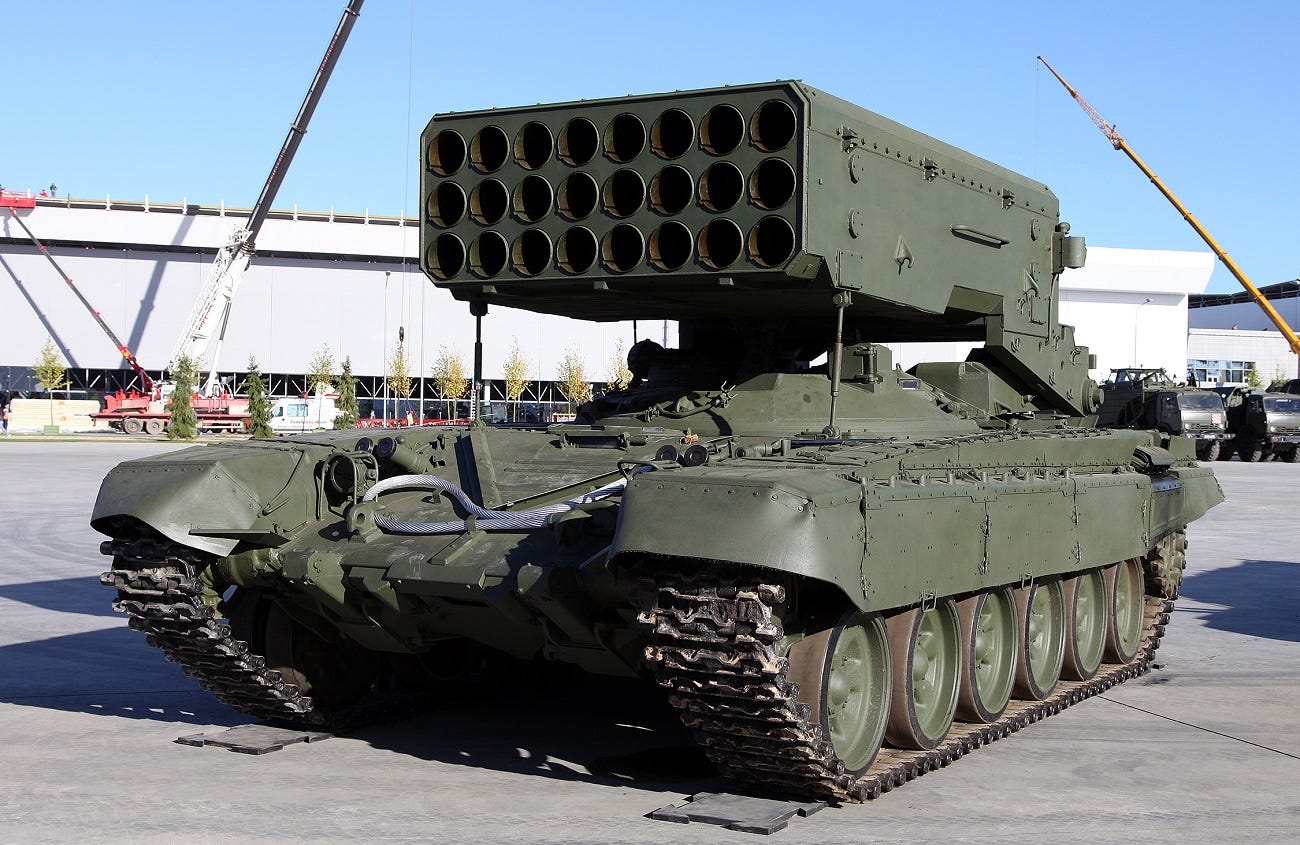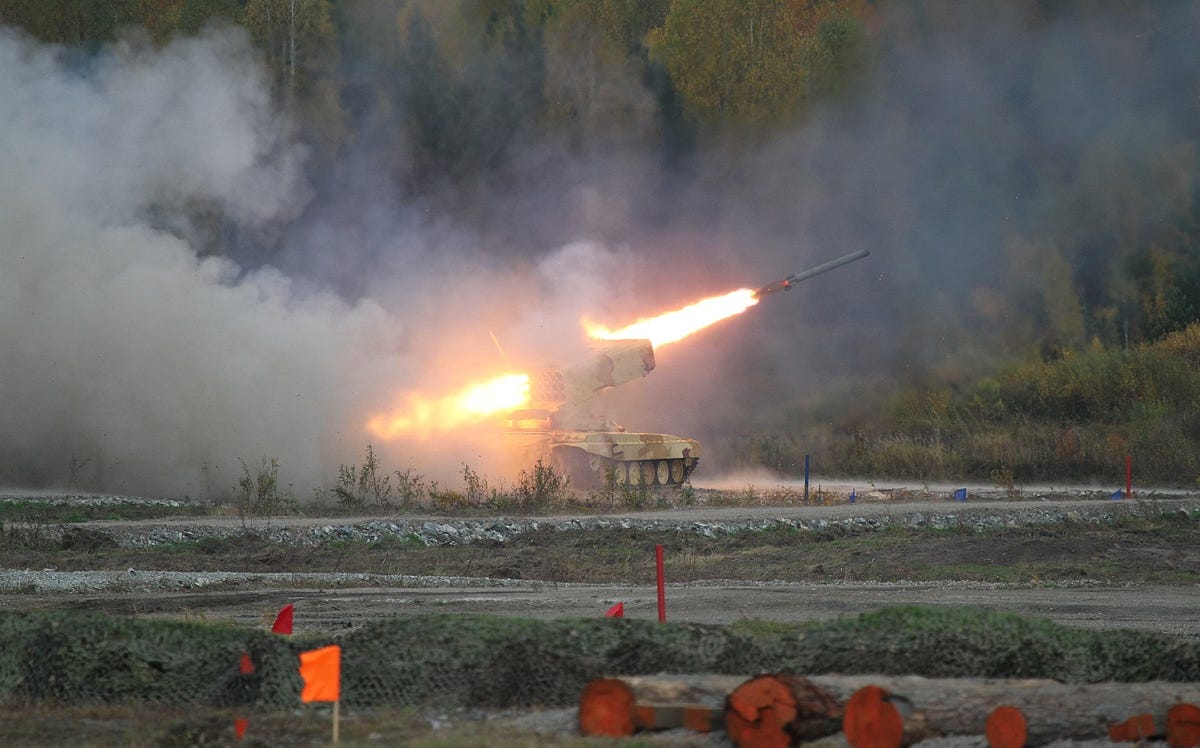by ROBERT BECKHUSEN
 Iraqi troops fighting for Mosul’s outskirts have brought along one of their most fearsome weapons — the 60-ton, Russian-made TOS-1A Buratino.
Iraqi troops fighting for Mosul’s outskirts have brought along one of their most fearsome weapons — the 60-ton, Russian-made TOS-1A Buratino.
A photograph and tweet from the Jerusalem Post’s Seth Frantzman shows Iraqi troops posing with the rocket launcher near Bartella, a battle-scarred Assyrian Christian town less than 10 miles from Mosul. Iraqi Counter-Terrorism Service troops took over the town on Oct. 20, one of dozens freed since the offensive began Oct. 16.
But Mosul is different as Iraq’s densely populated, second largest city. And the Islamic State has had more than two years to plan and prepare ambushes, tunnels and improvised explosive traps.
“They’ve had a long time to prepare for that fight, so all of that we’re going to contend with here very, very soon,” Gen. Joseph Votel, commander of U.S. forces in the Middle East, told NBC News during a visit to an American forward base.
Which might explain why Iraq brought along its TOS-1As. See, the Buratino — meaning Pinocchio — is unlike conventional artillery which lob high-explosive shells at long ranges. It’s more terrifying than that.
The TOS-1 is relatively shorter range and kills almost entirely with pressure.
Each of the launcher’s 24 thermobaric rockets contains a flammable chemical which disperses into the air above a target. Once dispersed, the rockets detonate — and in a flash — devastate an area roughly 200 by 300 meters wide. The fuel-air blast has a hideous effect on the human body, rupturing internal organs and suffocating the lungs.
As brutal as that is, the Buratino is precisely the kind of weapon the Iraqi army would want if it was worried about dug-in infantry, such as Islamic State fighters hiding in tunnels. But note — Mosul is also full of civilians.
 A Russian TOS-1A Buratino launches a rocket. Vitaly V. Kuzmin photo
A Russian TOS-1A Buratino launches a rocket. Vitaly V. Kuzmin photo
“In general, the TOS-1 or TOS-1As fills the same niche as the RPO series flamethrowers, but on a much larger scale,” analyst Charles Bartles wrote in areport for the U.S. Army’s Foreign Military Studies Office. “They will most often be utilized in urban warfare settings, bunker busting, and clearing light infantry.”
Iraq received at least four TOS-1As from Russia in 2014. The launcher rests on a T-72 tank chassis. The Russian army heavily fired Buratino rockets at cities in Chechnya during the 1999 war.
One of the Buratino’s biggest liabilities is its range of around 6,000 meters. By comparison, the U.S. Army’s Paladin guns and HIMARS rocket artillery — both deployed to Iraq — can blast enemies from 11 and 298 miles, respectively.
This makes the TOS-1A more vulnerable to attack, and it’d be unwise to be anywhere near one — and its thermobaric rockets — were it to explode. Aunconfirmed video apparently depicting a missile attack on a Syrian army Buratino in 2016 shows why.
And as War Is Boring’s Sebastien Roblin points out at The National Interest, the rockets’ blast radius poses a significant danger to civilians, such as in densely-populated Mosul.
During the 2015–2016 battle for Ramadi, the Iraqi army devastated swathes of that city with artillery. But during the battle for Hit, where the Islamic State prevented civilians from fleeing and used them as human shields, Baghdad reigned its artillery in.
In Mosul, like in Hit, the terror group is repeating the same war crime, according to the United Nations, as has executed hundreds more. As a result, thousands of ordinary people are in danger.
No comments:
Post a Comment